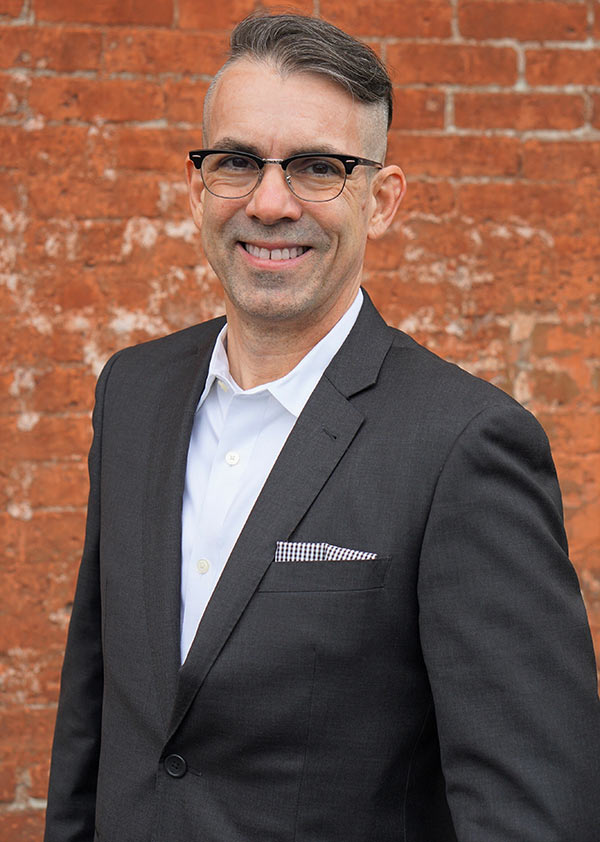Larry Holt was hired by the Columbia River Economic Development Council (CREDC) in January as Chief Operating Officer, a role evolved from vice president of strategy. He will oversee the business development team, bolster investor relations work and support President Jennifer Baker with strategic direction efforts. Holt joins CREDC from Greater Portland Inc., where he served as vice president of business development. Prior to that, he held roles at the City of Cedar Park in Texas and the Birmingham Regional Chamber of Commerce in Alabama.
Holt brings experience driving major economic development projects in the aerospace, advanced manufacturing, information technology and clean energy industries. Hailing from the deep Southeast – Alabama, Louisiana and Florida – he also brings a charming accent and a positive outlook underpinned by characteristic Southern grit.
We had a wide-ranging conversation that centered on his expertise in economic development, advanced manufacturing and the importance of place-making.
On his new role at the CREDC
“One of things that attracted me to coming to the CREDC is that (President) Jennifer Baker is committed to continuous improvement. She is constantly looking at each program and each process asking, ‘how can this be better?’” Holt said. “What Jennifer envisioned was building on great work being done, and bringing someone with a really strong business development background like myself.”
“I’m excited to join such a great team, to tell you the truth,” said Holt. Because of his previous role at Greater Portland, he has worked with CREDC for years, making an “incredibly smooth transition. It’s a great group of people here, with an amazing focus on building a great economic development program.” He said, “I’m kind of a builder guy,” citing previous positions in which he was charged with building up economic development programs. He spent four years as vice president of Business Development at Greater Portland, Inc. and eight years as assistant director of economic development at the City of Cedar Park, Texas. “I believe when economic development is led by the private sector, there is no ceiling on what we can do,” he said.
On the importance of talent
“This is my fourth state working in economic development, and some common threads have emerged. The biggest one is how critical talent is to today’s competitive, innovative corporations expanding through the U.S.,” he said, adding that “not every economic development organization has made talent a critical pillar of their economic development and strategic plan going forward.”
He said talent can make or break a company’s relocation. “If you make a bad location decision but you can find people, it’s not so much of an issue, but if you have trouble attracting people, those companies are in trouble.” He said, “Any operational advantages gained by being in a low cost location are negated when attracting and retaining talent is an issue.”
On advanced manufacturing
Advanced manufacturing finds its place in durable goods verticals such as advanced metal work, automotive and aerospace, where new technologies and innovations are integrated into products and processes. Some well known ones are Impossible Foods, PrecisionHawk, Samsung Electronics and Desktop Metal. Largely driven by technological innovation such as 3D printing, artificial intelligence, robotics and nanotechnology to meet market demands, advanced manufacturing plants are not your grandfather’s factory floor. Holt said that these types of companies have a continual focus on talent. “What I hear from CEOs is, ‘I’ve got to be able to find people and the community has to be welcoming to talent.’”
Holt pointed to Vigor, an aerospace, defense and marine manufacturer that plans to create 300 jobs in the next three years as a great example of the type of advanced manufacturing companies attracted to the region.
“That’s a company making a very long term investment in Clark County,” he said.
On creating place
Both Holt and CREDC Director of Communications Monica Santos-Pinacho spoke to place-making, or creating place, as a particularly influential part of the CREDC’s long-term plan. Santos-Pinacho said a goal is “to make Clark County recognized as the most healthy, amenity-rich community in the country.”
Holt said that while Visit Vancouver USA’s mission is to attract people to the region, “Our job is to communicate to businesses who may be interested – it’s not unrelated.” He talked about a sales mission that he and Baker were on in San Francisco last year. They met with “a major software adviser in the Bay Area,” and learned that “not every company was going into urban downtowns – many were going into suburban downtowns. The place-making role is critical.”
On challenges in the region
Holt maintains a sunny outlook when it comes to potential obstacles and challenges to economic development in Southwest Washington, saying the main challenge is, “There are a lot of great communities out there. We’re not the only community with the outstanding assets of quality of life and talent.”
When asked if transportation is an obstacle to business development in the region, he said it’s an “opportunity for leadership on the part of CREDC – nobody has their infrastructure the way that they want it.” He cites access to the airport, the ports of Vancouver, Camas-Washougal and Ridgefield and C-Tran as a boon to the region. “There are challenges and opportunities as well. The reason I’m in economic development is I like finding solutions.”
Holt said companies that are considering this region “don’t see the dividing line (between Vancouver and Portland) that perhaps we see. They’re looking at it from a macro level – is this a competitive community where products and people can thrive? I can assure you that’s how prospects are considering the region,” he said. “We’ve got to be proactive. We’ve got to get out there and tell our story. I’m really encouraged to be here at the CREDC with its focus on building a sustainable, respected program and the opportunity to refine some of these processes with a great team.”




